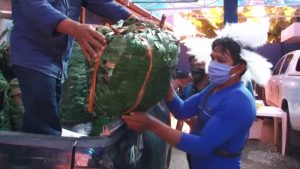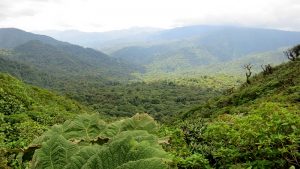A 46,000-year-old Aboriginal site was destroyed to expand an iron ore mine owned by the Rio Tinto Group, the third largest mining company in the world, authorized to detonate the cave in the Juukan Gorge.
The Anglo-Australian multinational that deals with research, extraction and processing of mineral resources has destroyed a site that Aborigines have considered sacred for countless generations. Situated in the Juukan gorge, the cave no longer exists. Consent to this operation has unfortunately been given due to aboriginal laws drawn up in 1972, which in fact did not protect sites such as this one, instead favouring mining lobbies.
The cave at Hammersley Ranges (about 60 km from Mount Tom Price) is one of the oldest in the western region of Pilbara and the only internal site in Australia to show signs of continuous human occupation during the last ice age. Some time ago it was discovered that the site was more than twice as large as previously thought and full of artifacts, including sacred objects. Among these precious remains, 4,000 year old human hair samples were also found, they belonged to the aboriginal Puutu Kunti Kurrama and Pinikura people, who still live in the area today.
Unfortunately, the obsolete Aboriginal heritage law does not allow to renegotiate consent on the basis of new information. So despite regular meetings with Rio Tinto, the Aboriginal society “Puutu Kunti Kurrama and Pinikura” (PKKP) has not been able to stop the explosion. “It’s one of the most sacred sites in the Pilbara region … we wanted to have that area protected,” said PKKP director Burchall Hayes.
“It is precious to have something like that plaited hair, found on our country, and then have further testing link it back to the Kurrama people. It’s something to be proud of, but it’s also sad. Its resting place for 4,000 years is no longer there.”
In 2012 there had been an attempt to revise the Aboriginal Heritage Act. The bill proposed by the former liberal government in 2014 was, however, rejected. Rewriting of the act was listed as a priority for Labor before the election victory in 2017, and Aboriginal affairs minister Ben Wyatt pushed back the final consultation on his bill until the end of the last year due to the coronavirus pandemic.
The new legislation will provide options to appeal or modify agreements that in fact do not protect Aboriginal heritage sites today. In the meantime, the cave is no longer there, even if the Rio Tinto Group spokesman claims that there was collaboration with the people Puutu Kunti Kurrama and Pinikura. A strange collaboration, considering that there were more than 7 thousand sacred and historical artifacts in that cave.
Source: The Guardian










